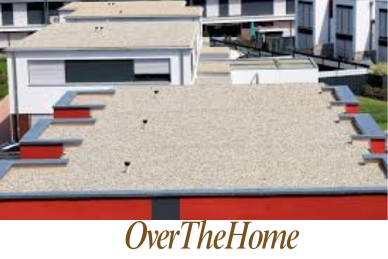How to Measure Roof Pitch with a Speed Square?
Did you know that the pitch of a roof can affect everything from snow load to drainage and even the overall aesthetic appeal of your home? Measuring the roof pitch accurately is crucial for any roofing project, whether you’re a professional roofer or a DIY enthusiast. Please do so to avoid costly mistakes and potential structural issues down the line.
In this article, we’ll explain, how to measure roof pitch with a speed square. Let’s go.
What is Roof Pitch?
Roof pitch, also known as roof slope or roof angle, is the measure of a roof’s steepness or incline. It’s typically expressed as a ratio or in degrees. For example, a roof pitch of 4:12 means that for every 12 inches of horizontal run, the roof rises 4 inches vertically.
Understanding and accurately measuring roof pitch is vital for several reasons:
- Structural Integrity: The pitch determines the amount of weight and load the roof can support, such as snow or wind loads. Steeper pitches require stronger framing to withstand these forces.
- Drainage and Weather Protection: Proper pitch ensures effective water runoff and prevents water pooling, which can lead to leaks and damage over time.
- Material Selection: Different roofing materials are better suited for specific pitch ranges. For instance, asphalt shingles are ideal for low to moderate pitches, while slate or metal roofing can handle steeper slopes.
- Aesthetic Appeal: The pitch contributes significantly to the overall look and style of a home or building.
Materials and Tools You’ll Need to Measure Roof Pitch
To measure roof pitch with a speed square, you’ll need the following materials and tools:
- Speed Square: This is the primary tool for taking pitch measurements. Look for a durable, high-quality speed square from reputable brands like Swanson, Empire, or Johnson.
- Torpedo Level (optional): While not strictly necessary, a torpedo level can help ensure your speed square is level, resulting in more accurate measurements.
- Pencil and Notepad: For recording your measurements and calculations.
- Tape Measure or Ruler: To calculate the actual rise if needed.
You can find these tools at most hardware stores, home improvement centers, or online retailers like Amazon, Home Depot, or Lowe’s.
Step-by-Step Guide to Measuring Roof Pitch with a Speed Square
Follow these step-by-step instructions to accurately measure roof pitch using a speed square:
- Locate the Pivot Point: First, identify the pivot point on your speed square. This is the corner where the two arms of the triangle meet.
- Position the Speed Square: Place the pivot point directly against the roof shingles or surface, ensuring it’s level with the slope. You can use the body of the square to secure it against the roof if needed. Show Image
- Level the Speed Square: If you’re using a torpedo level, place it on the wide, flat base of the speed square. Adjust the speed square until the level indicates it’s perfectly level.
- Read the Pitch Markings: Once the speed square is leveled and positioned correctly, look at the markings on the side of the square where it aligns with the roof. The markings will indicate the roof pitch in two ways:
- Ratio (e.g., 4:12): This represents the rise in inches for every 12 inches of horizontal run. So, a 4:12 pitch means the roof rises 4 inches vertically for every 12 inches of horizontal distance.
- Degrees: The markings also show the actual angle of the slope in degrees.
Here’s a visual chart to help you interpret common pitch markings:
| Pitch Ratio | Degree Angle | Common Use |
| 2:12 | 9.5° | Minimum pitch for asphalt shingles |
| 4:12 | 18.4° | Typical pitch for asphalt shingles |
| 6:12 | 26.6° | Steeper pitch for slate or metal roofing |
| 8:12 | 33.7° | Steep pitch for tile or metal roofing |
| 12:12 | 45° | Very steep pitch, sometimes used for architectural accents |
- Optional: Calculate Actual Rise: If needed, you can calculate the actual rise (vertical distance) using the pitch ratio and the desired horizontal run. For example, if you have a 4:12 pitch and a horizontal run of 10 feet (120 inches), the rise would be 40 inches (4/12 x 120 inches). Rise = (Pitch Ratio) x (Horizontal Run)
Troubleshooting & Additional Tips
Here are some additional tips and tricks to help you get accurate measurements when using a speed square:
- Handling Uneven Roof Surfaces: If the roof surface is uneven or curved, try to find a flat spot for measurement. If not possible, take multiple readings in different locations and average them out.
- Taking Multiple Readings: Even on flat roofs, it’s a good practice to take measurements in different locations to account for minor variations in pitch. This will give you a more reliable overall measurement.
- Using a Digital Level: For increased accuracy, consider using a digital level with an inclination measurement feature. These levels can provide precise angle readings, eliminating the need to interpret markings on the speed square.
- Safety Reminder: Always prioritize safety when working on a roof. Use proper safety equipment, maintain a secure footing, and don’t attempt any measurements you’re uncomfortable with.
FAQ
What is the formula for pitch?
The pitch ratio (e.g., 4:12) represents the rise in inches for every 12 inches of horizontal run. To calculate the actual rise, the formula is: Rise = (Pitch Ratio) x (Horizontal Run).
How do you manually calculate pitch?
If you know the horizontal run and the rise (vertical distance) of your roof, you can manually calculate the pitch using trigonometry. Measure the horizontal run and rise, then use the tangent function to find the pitch angle or ratio. This method is more time-consuming but doesn’t require special tools.
What is a 12×12 roof pitch?
A 12×12 roof pitch, also known as a 12:12 pitch or a 45-degree pitch, is a very steep roof slope. This means that for every 12 inches of horizontal run, the roof rises 12 inches vertically. It’s a commonly used pitch for architectural accents or steep roofs, but not as common for residential roofing due to the extreme slope.
What degree is a speed square?
A speed square itself is not a specific degree angle. It’s a triangular tool with markings that correspond to various pitch ratios and their equivalent angles in degrees. For example, the 4:12 pitch marking on a speed square represents an 18.4-degree angle.
Conclusion
Remember, while speed squares are an affordable and convenient tool, they may not provide the same level of precision as professional tools used by experienced roofers. If you’re unsure about your measurements or the complexity of your roofing project, it’s always best to consult a qualified roofing contractor.






